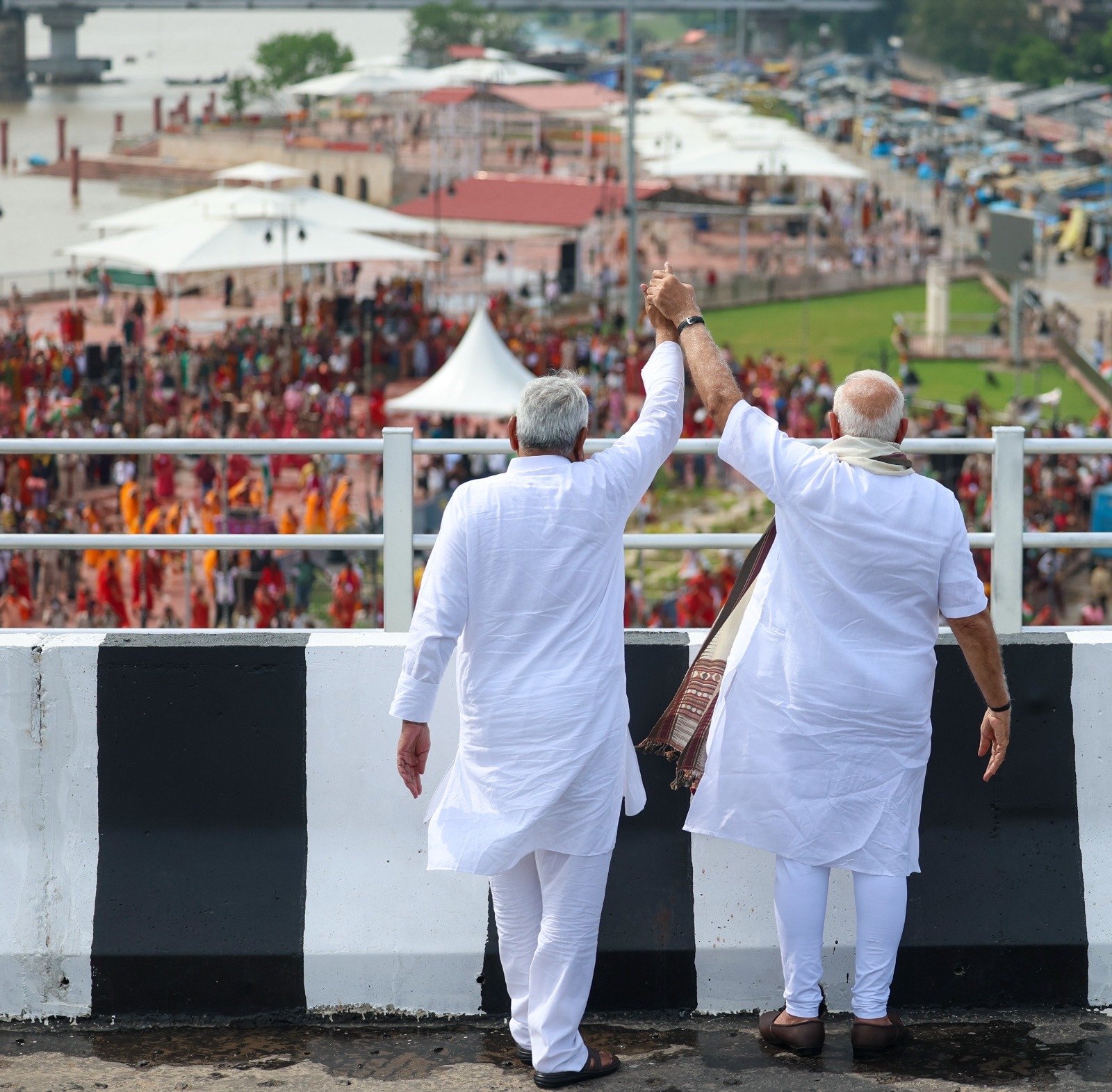How Bihar is Building Bridges to the Future: A Global Look at India’s Infrastructure Push from the Hindi Heartland
Indian Prime Minister Narendra Modi’s recent visit to Bihar marked a significant moment in India’s infrastructure narrative, with the launch of development projects collectively worth ₹12,000 crore.
At the center of this transformation stands the newly inaugurated Aunta–Simaria bridge, a six-lane engineering achievement that connects Patna’s Mokama with Begusarai across the Ganga river. More than a regional infrastructure project, the bridge represents a broader reimagining of India's economic geography, logistical efficiency, and rural connectivity.
 |
| Image Source: PM NaMo on X |
The new structure, built at a cost exceeding ₹1,870 crore, eliminates over 100 kilometers of detour for heavy commercial vehicles traveling between North and South Bihar. For India’s fifth-most populous state, this upgrade is not just about ease of travel but about rewiring regional trade and industrial linkages.
The bridge is a key component in a larger suite of projects inaugurated that day. The Buxar Thermal Power Plant, valued at nearly ₹6,900 crore, significantly enhances Bihar’s power generation capacity.
This project supports India’s wider goals of energy security while enabling industrial growth in the East. The plant's commissioning is expected to reduce reliance on power imports and provide more stable supply for both domestic consumption and industrial operations.
Healthcare infrastructure received a major boost too with the launch of the Homi Bhabha Cancer Hospital and Research Centre in Muzaffarpur.
The facility brings advanced oncology services--including surgery, diagnostics, and critical care--within reach of patients in Bihar and neighboring states.
This expansion of medical access reflects India's ongoing attempt to decentralize advanced healthcare and reduce treatment migration to metro cities.
Complementing these were several urban development initiatives. Sewerage and sanitation projects launched under the Namami Gange mission aim to clean the Ganga while improving public health in towns like Munger, Daudnagar, and Jehanabad.
Water supply upgrades under the AMRUT 2.0 program in Aurangabad, Bodhgaya, and Jehanabad are part of a push to raise urban living standards through clean drinking water and modern waste systems. These efforts dovetail with India’s broader climate and public health commitments.
In the rail sector, two new trains were flagged off. The Amrit Bharat Express between Gaya and Delhi offers improved speed, comfort, and access to the national capital, while the Buddhist Circuit Train connecting Vaishali and Koderma is designed to promote heritage tourism along one of the most culturally significant routes in South Asia.
Gaya itself is being modernized under the Amrit Bharat Station Scheme, aiming to provide passengers with airport-like amenities as Indian Railways transitions toward a more globally competitive travel experience.
The significance of these efforts lies not just in their scale but in their coherence. Taken together, they represent a multi-sector development strategy that integrates housing, energy, transport, health, sanitation, and tourism into a single regional uplift model.
With over 16,000 families in the Magadh region receiving pucca homes under the Pradhan Mantri Awas Yojana, the government’s housing mission continues to link welfare with dignity, particularly in areas where historical underdevelopment has driven large-scale migration.
बिहार में इंफ्रास्ट्रक्चर से जुड़े एक ऐतिहासिक अध्याय का साक्षी बनने का सौभाग्य मिला। इस दौरान लोगों में औंटा-सिमरिया पुल के लोकार्पण को लेकर जो जोश और उत्साह दिखा, वो अद्भुत था। मुझे विश्वास है कि यह पुल यहां के लोगों के जीवन में बड़ा बदलाव लेकर आएगा। pic.twitter.com/HRxftWMjbW
— Narendra Modi (@narendramodi) August 22, 2025
This infrastructure surge also reflects a conscious effort to correct regional imbalances. Bihar, long seen as a symbol of outmigration and economic stagnation, is now being repositioned as a vital node in India’s growth story.
The government’s messaging is not only aimed at local populations but is also targeted toward global observers watching how India scales its growth across uneven geographies. For international investors, multilateral institutions, and infrastructure planners, Bihar’s transformation offers a test case in state-led development.
Politically, the projects are framed within a narrative of accountability and time-bound delivery. The Prime Minister emphasized that he had both laid the foundation stone and returned to inaugurate the bridge, highlighting a shift away from the delays that have plagued Indian public works for decades.
This claim of punctual governance contrasts with earlier regimes, often accused of leaving infrastructure projects in limbo and using them as vehicles for patronage.
At a time when global supply chains are being recalibrated and regional infrastructure is gaining geostrategic importance, Bihar’s renewed connectivity matters beyond its borders.
The corridor improvements strengthen trade routes not only within India but also toward Nepal and the broader South Asian region. As India ramps up its role in global logistics, especially through eastward corridors connecting the Bay of Bengal, projects like Aunta–Simaria bridge become part of a larger transnational infrastructure vision.
Perhaps most critically, this multi-billion-dollar push is a reminder that national growth must be inclusive of its peripheries. Infrastructure is not simply about engineering; it is about integrating people, economies, and aspirations.
By bringing power plants, cancer hospitals, express trains, and reliable bridges to one of India’s historically underserved states, the country signals its commitment to making development a truly nationwide story.
In this transformation of Bihar from lantern-lit roads to power corridors, from rail bottlenecks to seamless expressways, and from outmigration to homecoming employment, infrastructure is more than just concrete and steel.
It is the foundation for reshaping India’s social contract and its global footprint.
